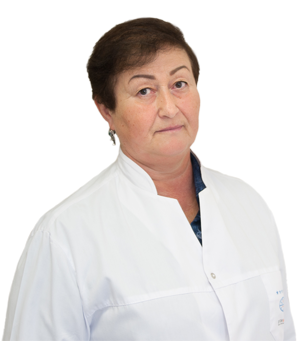Scarlet fever in adults

Infectionist, Computed Tomography Radiologist
Olga Valentinovna
Experience 32 year
The highest qualification category of an infectious disease doctor
The symptoms of scarlet fever in adults are due to an acute infection that predominantly affects the oropharynx. Intoxication is pronounced, a rash on the skin, the tongue becomes crimson. The patient suffers from fever, scarlet fever, local lymphadenitis. The causative agent of the disease is group A streptococcus. It is transmitted by airborne droplets and by contact. Diagnosis is carried out on the basis of typical, characteristic features.
Symptoms and signs of scarlet fever
The symptoms and treatment of scarlet fever are interrelated. The general condition of the patient resembles a cold. He feels weak, quickly gets tired even from minor actions, his body temperature rises. In the initial periods, scarlet fever resembles the flu or another similar disease, although a day later, a characteristic rash with scarlet fever begins to appear. It is called exanthema. It is caused by erythrogenic toxins, which are a component of exotoxins released by the causative agent of the disease. Because of it, the upper layers of the skin begin to become inflamed. This is an allergic reaction of the body. By its characteristic features, it can be distinguished from rashes in other infectious diseases. Acne is small in size. They can initially be seen on the neck and upper torso. The skin becomes reddish and rough. In 2-3 days, the rash spreads to all parts of the body. It can last from several hours to 5 days. Then peeling remains in its place. This exfoliates skin cells that have been affected by the toxin of the causative agent of the disease.
There may also be characteristic signs of scarlet fever on the face. It acquires puffiness, puffiness. Around the lips and nose, the area of skin is very pale, which creates a sharp contrast to the crimson lips and cheeks. Eyes shine, characteristic of fever.
The appearance of the tongue also changes during illness. At first, he has a bloom of a whitish or brown hue. From the fourth day, the plaque disappears, and the tongue acquires a raspberry color characteristic of scarlet fever, as well as an increase in smooth papillae. It will not change until the 12th day of illness. This symptom is also called "strawberry" or "raspberry" tongue, which is characteristic of this pathology.
Causes of
The causative agent of scarlet fever is a separate type of streptococcus. It can cause other diseases, for example, erysipelas, sore throat. Since there is only one pathogen, an adult can get sick after contact with a patient who suffers from such diseases.
Streptococcus can be in an inactive state in the human body, that is, it does not manifest itself as a disease. Carriers of this infection, which is in a kind of "dormant" form, are also sources of the disease. But in most cases, they get sick with scarlet fever after contact with another patient with this particular ailment. The period of scarlet fever, when the patient is still infectious, is from the first to the 22nd day.
Ways of infection
Scarlet fever is a contagious disease. To get sick, you need communication and contact with a patient with the same disease, sore throat or someone who is a carrier of streptococcal infection. Also, people from the environment of an infected person with bronchitis, tonsillitis pose a danger. This is due to the fact that they can be a source of hemolytic streptococcus.
There are several ways of infection:
- airborne. You can get infected by communicating with a carrier or a sick person. This is how the disease usually spreads in kindergartens. This is facilitated by talking, coughing. Small drops of saliva with pathogens are released into the air, then another person inhales them, so that the bacteria enters his respiratory tract;
- domestic. The infection is transmitted through household items that the patient previously used. These can be bed linen, towels, dishes, toys, etc. Although under such conditions the bacteria loses their dangerous properties, it can still cause illness in an infected person;
- food. Bacteria may have entered the food during cooking. Especially dangerous in this case are dairy products that have not been boiled or subjected to any heat treatment.
In rare cases, the infection is transmitted through damaged skin. It can be burns, wounds, mucosal damage. They will be the entrance gate for infection.
Risk factors
It is necessary to consider all routes of infection with the causative agent of the disease and try to avoid them. Usually children get infected with scarlet fever at the age of 3-10 years, when they attend kindergartens and schools, but adults get sick less often. The same applies to children in the first six months of life. Usually cases of the disease occur during the colder months of the year. At risk are people with weak immunity.
Complications
All the consequences of scarlet fever in adults are explained by the peculiarity of the causative agent of the disease. Streptococcus of this variety is able to influence the human body from three sides. First, it poisons with toxins that have a bad effect on the adrenal glands, nervous system, blood vessels, heart, and also disrupt metabolism. Secondly, it causes an allergic reaction, which is considered the most dangerous option. Thirdly, this is a septic effect, that is, the bacterium spreads through the blood throughout the body, causing foci of purulent inflammation in various organs and systems.
There are such early complications of scarlet fever:
- necrotizing tonsillitis. In the future, it can cause the death of mucous layers on the tonsils;
- paraamygdalic abscess. Purulent masses accumulate in the nasopharynx;
- lymphadenitis. Lymph nodes become inflamed;
- otitis. The middle section of the ear becomes inflamed;
- pharyngitis. The inflammation affects the walls of the pharynx;
- sinusitis. Inflammatory processes develop in the paranasal sinus;
- abscess in the kidneys and liver;
- sepsis - blood poisoning.
The most serious late complications are:
- damage to the heart valves;
- synovitis (inflammatory processes of the serous type in the joints);
- rheumatism (damage to large articular joints);
- glomerulonephritis (inflammation of the kidneys).
Early complications appear about 3-4 days after the onset of the disease. But the most dangerous are the late consequences. This is why prevention of scarlet fever is extremely important.
When to see a doctor
An infectious disease doctor is engaged in diagnostics of scarlet fever. You can determine the disease by how scarlet fever manifests itself. It is necessary to pay attention to the general condition of the patient. He develops symptoms that are typical of the common cold or flu. However, after this, a rash begins in the upper torso, which quickly spreads throughout the body. Another characteristic symptom is a raspberry tongue and cheeks, and the area of the nose and lips, on the contrary, is too pale.
Preparing to see a doctor
You definitely need to know what scarlet fever looks like so as not to miss its beginning. It is recommended to write down all the symptoms that have occurred recently, and then tell your doctor about them.
Diagnosis of scarlet fever
You can undergo examination and diagnosis of scarlet fever in our clinic, which is located in the central district of Moscow. First, a patient survey and a general examination are carried out. After that, a general blood test is done. This will be enough for a diagnosis. the disease has clear characteristic symptoms. If complications from the cardiovascular system appear, then an additional consultation with a cardiologist is prescribed, as well as an ECG and ultrasound of the heart. If additional otitis media appears, then the help of an otolaryngologist with an otoscopy is required. If the consequences have spread to the organs of the urinary system, then an ultrasound of the kidneys is performed.
Treatment
The doctor at the clinic will tell you how to treat scarlet fever. He prescribes antibiotics for scarlet fever without fail. Chooses medicines individually for the patient. Additionally, antihistamines, antipyretic drugs are prescribed, as well as drugs to strengthen blood vessels, local sanitation.
Home remedies treatment
With scarlet fever, quarantine is not required. Treatment is usually done at home. They are sent to the hospital only in case of a severe course of the disease, as well as if there are children in the family and there is no way to isolate the patient. Be sure to stay in bed for a week.
Prevention
There are no vaccinations for scarlet fever that are specific to this disease. This is due to the fact that there is a huge variety of species of this pathogen. A special vaccine is being developed, but it is undergoing clinical trials. As its substitute, streptococcal toxoid is still used.
How to make an appointment with an infectious disease specialist
You can make an appointment with an infectious disease specialist at Medicina JSC (Academician Roitberg's clinic) in the central district of Moscow by calling the round-the-clock phone +7 (495) 995-00-33 or using the registration form on the website. Clinic address: 2nd Tverskoy-Yamskaya per. ten.




